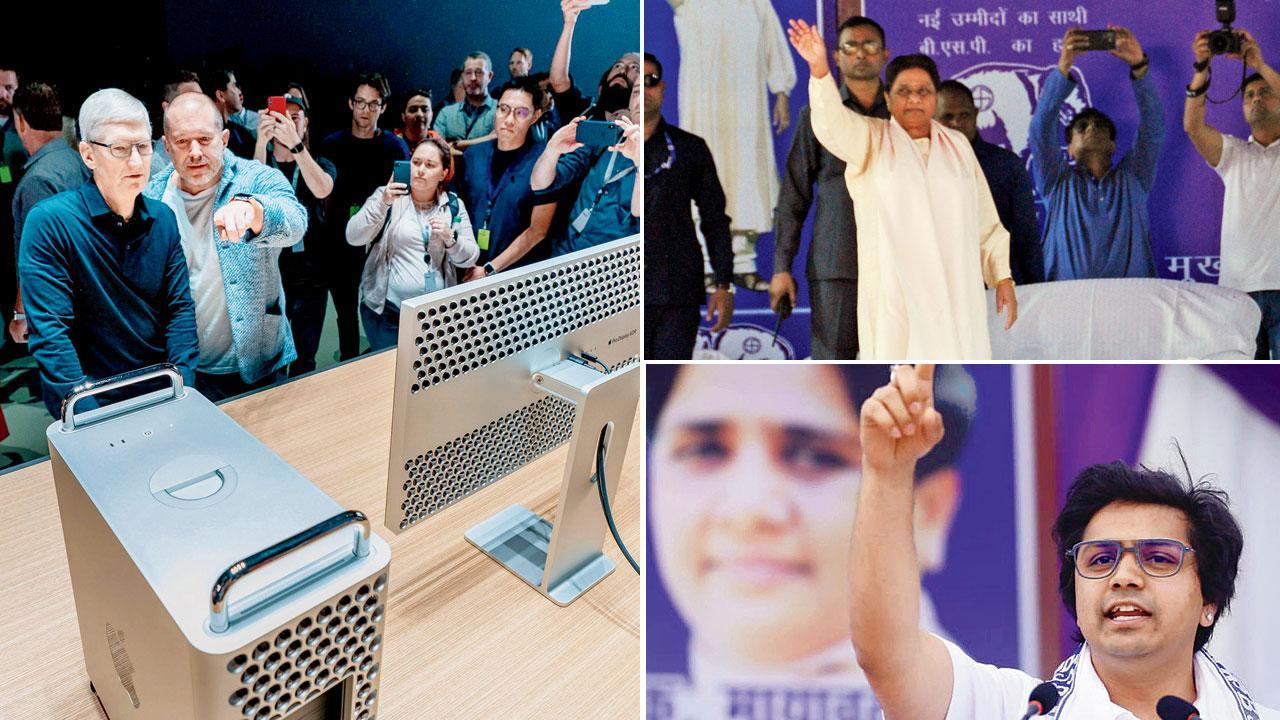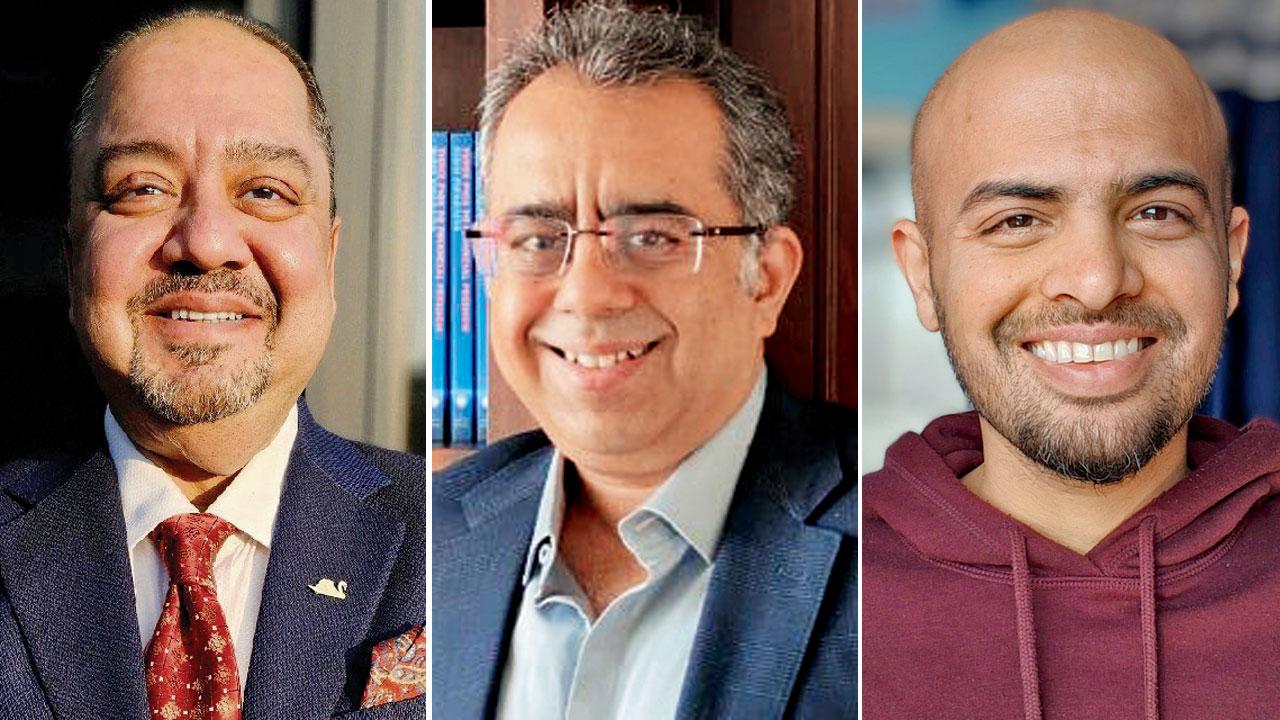Identifying a worthy successor is crucial for an outgoing leader’s legacy. With speculation rife about who will succeed Apple CEO Tim Cook, and Mayawati dropping her nephew as her successor, experts decode the criticality of the decision-making process

Tim Cook joins his colleagues at the World-Wide Developers Conference in San Jose, 2019. Pics Courtesy/Time_Cook on X; Bahujan Samaj Party national president Mayawati waves to crowds at a rally in Ghaziabad. Pic Courtesy/Getty Images; BSP leader Akash Anand addresses a rally in Uttar Pradesh. Pic Courtesy/Anandakash_BSP on X
Tim Cook, who took over the reins of Apple from Steve Jobs in 2011, will turn 64 this year. And while the venerated CEO has indicated that he does not intend to retire in the near future, speculations are rife about who will take over his coveted mantle when the time comes. Business pundits across the world are taking a closer, harder look at Cook’s core team, considering that Cook himself was the COO under Jobs before he was moved up the leadership hierarchy. But what key considerations does an outgoing leader make when selecting a worthy successor? More significantly, why is this decision one of the most crucial ones that Cook can make in his already illustrious career?
Although the idea of succession is not often discussed in leadership discourse, it is an important component of a successful leader’s legacy, experts say. “Succession planning is a key leadership requirement at all leadership levels.
 Dr Brajesh Bajpai, Rishi Piparaiya and Ojas Mehta
Dr Brajesh Bajpai, Rishi Piparaiya and Ojas Mehta
Every senior leader should, if they haven’t already, plan their succession roadmap. The reasons for this are twofold; the first is an organisational requirement as the present leader will move up at some stage, and it is a part of their responsibility to ensure that someone capable steps into their shoes. The second reason is more strategic: what many leaders don’t recognise is that the fastest way to grow in an organisation is to make themselves redundant. While this might sound quite provocative, it simply means that if the leader has put together a team that is capable of doing everything that [s]he is responsible for, in the eyes of the organisation, that leader is ready to be moved up,” shares Dr Brajesh Bajpai, executive coach and mentor, and managing executive at Vodacom Group.
Setting the stage
Successful leaders breed more leaders, says Bajpai, noting that a reputation of building future leaders adds to the incumbent’s own leadership capital. A key step that a leader can take is to ensure that the process of grooming and nurturing leaders is embedded into the organisation’s DNA, suggests Ojas Mehta, a leadership development coach. “Regular training and development opportunities, as well as responsibilities that enable potential candidates to learn and develop their leadership skills must be built into their work. This is an investment that can yield rich dividends for the entire organisation in the long term,” he adds.
Have a vision
“Whether the successor is chosen from within the existing organisation or brought into the organisation has a lot to do with the objectives and vision of the firm,” explains Rishi Piparaiya, a leadership mentor. He clarifies that if the organisation is keen to maintain the status-quo and an even keel, an existing team member could be the best fit for the leadership role. On the other hand, if the organisation is aiming for disruption and wants to shake things up, bringing in a fresh face may be a much-required shot in the arm.
Regardless of the decision made, it is important to involve all key stakeholders in the process. “With larger organisations especially, these decisions are not made in isolation, and the inputs of the board should be considered, and their concerns addressed. It’s also important to maintain clear and transparent communication with these stakeholders throughout the process,” says Bajpai.
Let go of your biases
It is human nature to want to seek out a successor that is similar to the outgoing leader. “We are genetically programmed to seek out people who behave and think like us. In the absence of checks and measures, these biases can get the better of us and set us up for failure. We could be inadvertently breeding a posse of ‘yes-men’ [or women], which creates several blind spots in the organisation’s long-term strategy and thinking,” cautions Bajpai.
Proving that proximity by association doesn’t always ensure the best fit is Bahujan Samaj Party (BSP) chief Mayawati’s decision to sack her nephew, Akash Anand, from his role as national coordinator and also her political successor. In her announcement, she shared that she was considering the larger interests of the party as well as Anand’s perceived ‘lack of maturity’.
When selecting a future leader, he emphasises on not choosing people who can do the job at hand but rather those who can get the job done or inspire others to get it done. “Organisations have been waking up to the importance of people skills, over purely technical abilities. Instead of relying purely on performance reports and spreadsheets, look for potential candidates with strong ‘soft skills’ such as empathy, conflict resolution, ability to manage stress, and how they handle feedback and ambiguity. Importantly, ensure that they have the right attitude, work ethic, and willingness to grow and adapt to the requirements of their role,” says Mehta.
Smooth handover
The kind of guidance a new leader receives can largely influence his/her performance in the new role. “While it’s important to not be overbearing, to micromanage or to overstay your welcome, it’s also crucial to give your successor the tools and guidance [s]he needs to essay the role successfully. Plan for some overlap and have a sound plan, which is shared with all stakeholders, to ease the transition,” shares Piparaiya.
At the same time, Mehta highlights the importance of a failsafe plan that comprises the necessary countermeasures to stabilise the shift, should the new leader not be a good fit for the role (s)he has been tasked with.
 Subscribe today by clicking the link and stay updated with the latest news!" Click here!
Subscribe today by clicking the link and stay updated with the latest news!" Click here!










